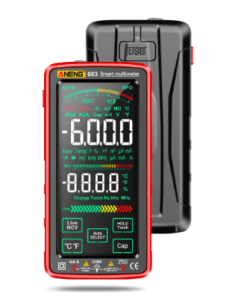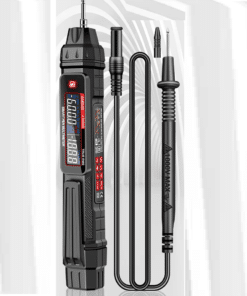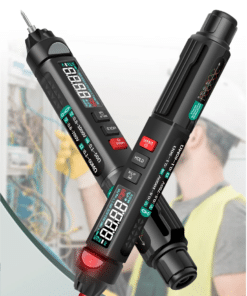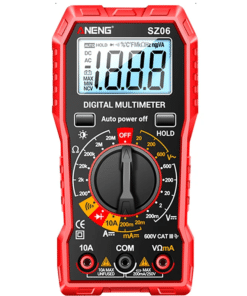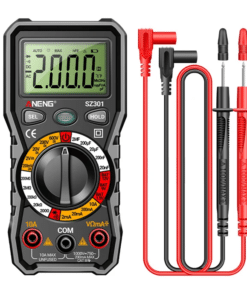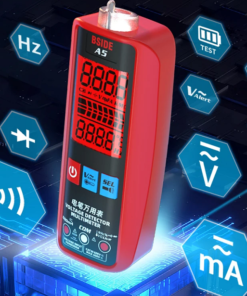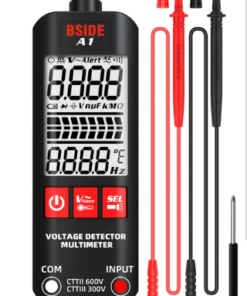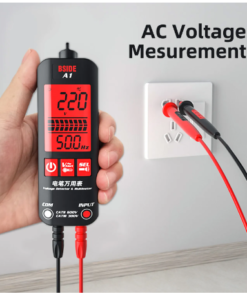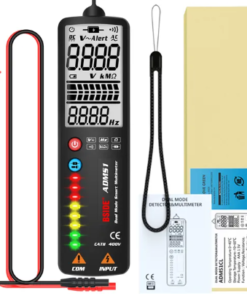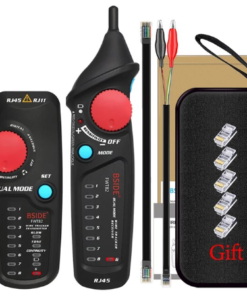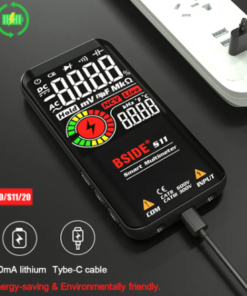Digital Multimeter
A digital multimeter (DMM) is a versatile electronic instrument used to measure various electrical properties, including voltage, current, and resistance. It’s an essential tool for electricians, technicians, and DIY enthusiasts.
Key Features and Functions:
- Voltage Measurement: Measures both AC (alternating current) and DC (direct current) voltages.
- Current Measurement: Measures both AC and DC current.
- Resistance Measurement: Measures the resistance of components like resistors.
- Continuity Testing: Checks for a complete electrical circuit.
- Diode Testing: Tests the forward voltage drop of diodes.
- Capacitance Measurement: Measures the capacitance of capacitors.
- Frequency Measurement: Measures the frequency of AC signals.
How to Use a Digital Multimeter:
- Select the Right Function: Choose the appropriate function (voltage, current, resistance, etc.) using the selector dial or buttons.
- Set the Range: Select the appropriate range for the measurement to avoid overloading the meter.
- Connect the Probes: Connect the red probe to the positive terminal and the black probe to the negative terminal or common ground.
- Take the Measurement: Place the probes on the points you want to measure and read the value on the digital display.
Safety Precautions:
- Always follow the manufacturer’s instructions.
- Never exceed the maximum voltage or current ratings of the multimeter.
- Be cautious when working with live circuits.
- Use insulated probes and avoid touching live components.
- Turn off the power to the circuit before making measurements.
By understanding the basic functions and safety precautions of a digital multimeter, you can effectively use it to troubleshoot electrical problems, perform maintenance, and ensure the safety of electrical systems.
Digital Multimeter
Digital Multimeter
Digital Multimeter
Digital Multimeter
Digital Multimeter
Digital Multimeter
Digital Multimeter
BSIDE A1 A5 Smart Digital Multimeter Professional Automatic Multitester
Digital Multimeter
Digital Multimeter
Digital Multimeter
Digital Multimeter
Digital Multimeter

